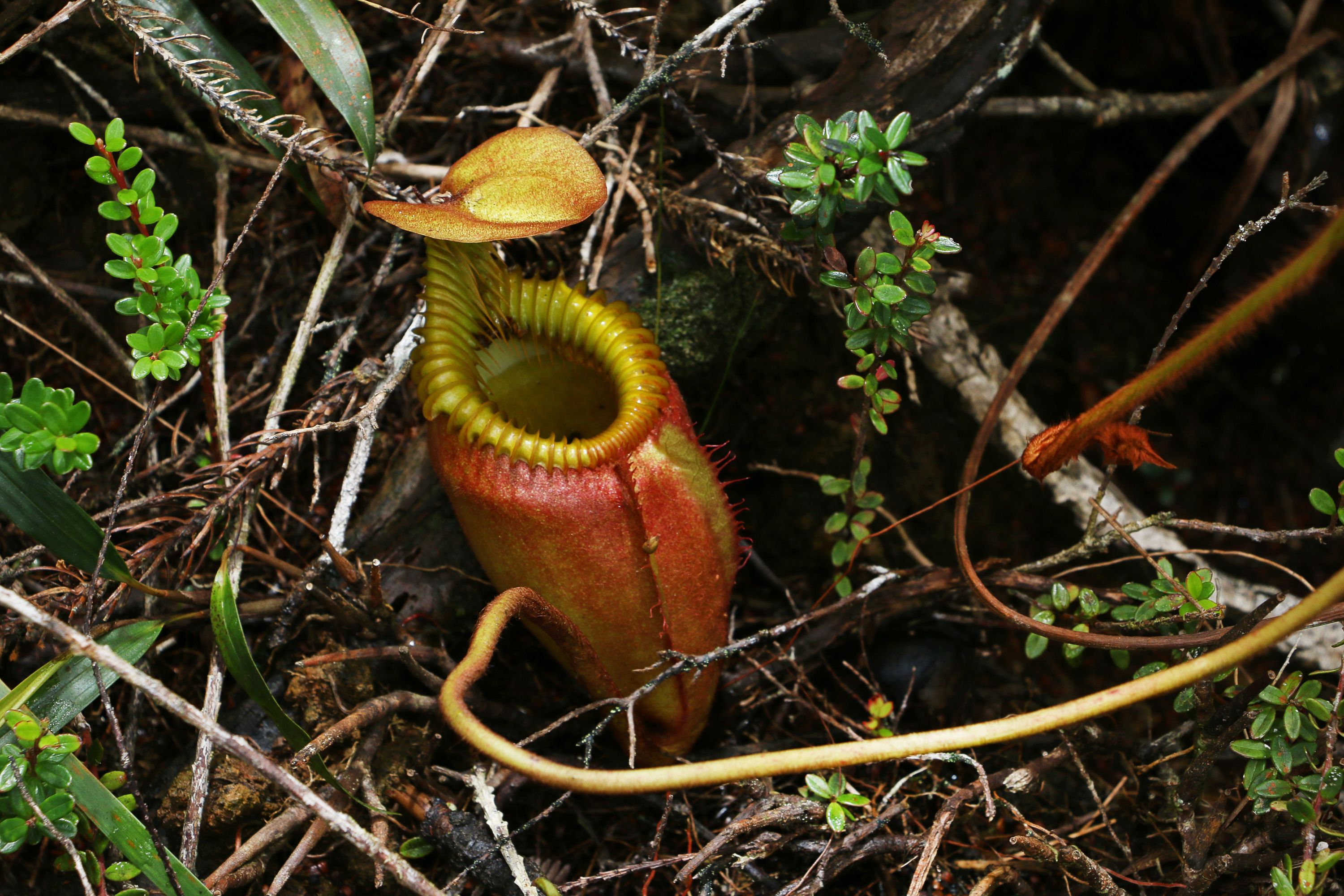The villose pitcher-plant
(Nepenthes villosa)

Description
Nepenthes villosa higher elevations than any other Bornean Nepenthes species, occurring at elevations of over 3,200 m (10,500 ft). Nepenthes villosa is characterised by its highly developed and intricate peristome, which distinguishes it from the closely related N. edwardsiana and N. macrophylla. The specific epithet villosa is Latin for "hairy" and refers to the dense indumentum of this species. Nepenthes villosa is a weak climber, rarely exceeding 60 cm (24 in) in height, although the stem may grow to 8 m (26 ft) in length and 10 mm (0.4 in) in diameter. Internodes are cylindrical and up to 10 cm (4 in) long. Leaves are coriaceous and petiolate. The lamina is spathulate to oblong and may be up to 25 cm (10 in) long and 6 cm (2.4 in) wide. The apex of the lamina is emarginate. The petiole is canaliculate, up to 10 cm (3.9 in) long, and bears an amplexicaul sheath. One to three longitudinal veins are present on either side of the midrib. Tendrils may reach 50 cm (20 in) in length. Lower and upper pitchers are very similar. They are urceolate to ovate in shape. The pitchers grow up to 25 cm (10 in) high and 9 cm (3.5 in) wide. A pair of fringed wings (≤15 mm wide) runs down the front of the pitcher, although it may be reduced to ribs in aerial traps. The pitcher mouth is oblique and elongated into a neck at the rear. The glands on the inner surface are overarched and occur at a density of 200 to 1300 per square cm (30 to 200 per square in). The peristome is cylindrical in cross section and up to 20 mm (0.8 in) wide. It bears well developed teeth and ribs. The lid or operculum is cordate and has a pointed apex. It has a pair of prominent lateral veins. An unbranched spur, ≤ 20 mm (0.8 in) long, is inserted at the base of the lid. Nepenthes villosa has a racemose inflorescence. The peduncle may be up to 40 cm (16 in) long, while the rachis grows to 20 cm (8 in) in length. Pedicels are filiform-bracteolate and up to 15 mm (0.6 in) long. Sepals are round to elliptic and up to 4 mm (0.2 in) long. A study of 490 pollen samples taken from two herbarium specimens (J.H.Adam 1124 and J.H.Adam 1190, collected at an elevation of 1,800–3,400 m (5,900–11,200 ft)) found the mean pollen diameter to be 37.2 μm (SE = 0.2; CV = 6.7%). The species has a dense indumentum of long, brown hairs that covers all parts of the plant.
Taxonomic tree:







